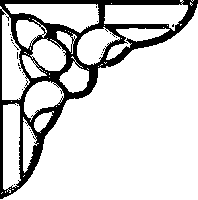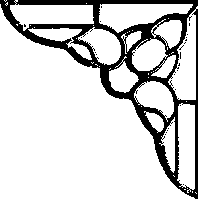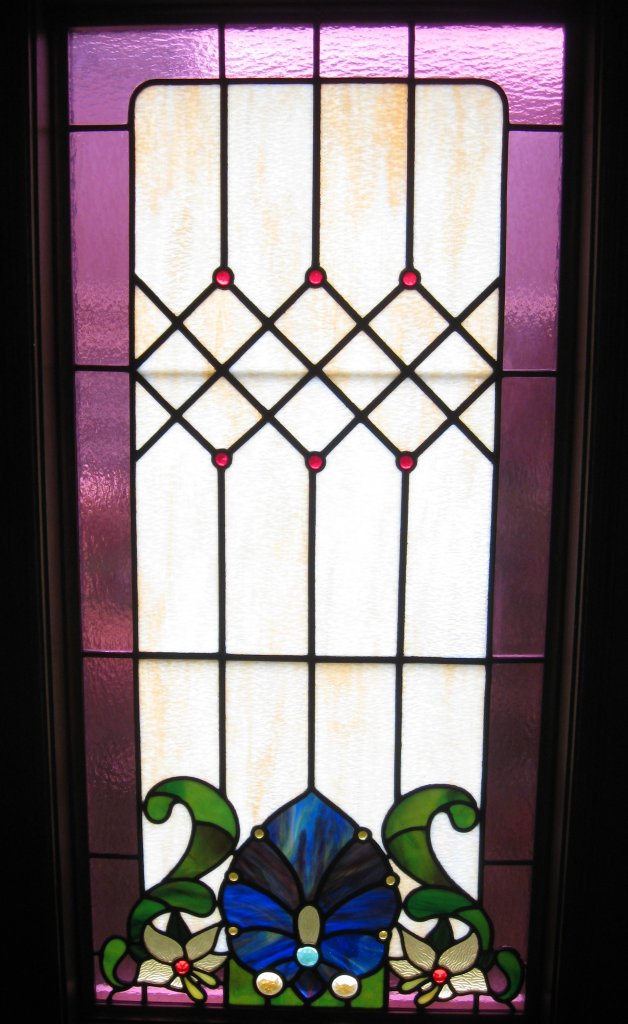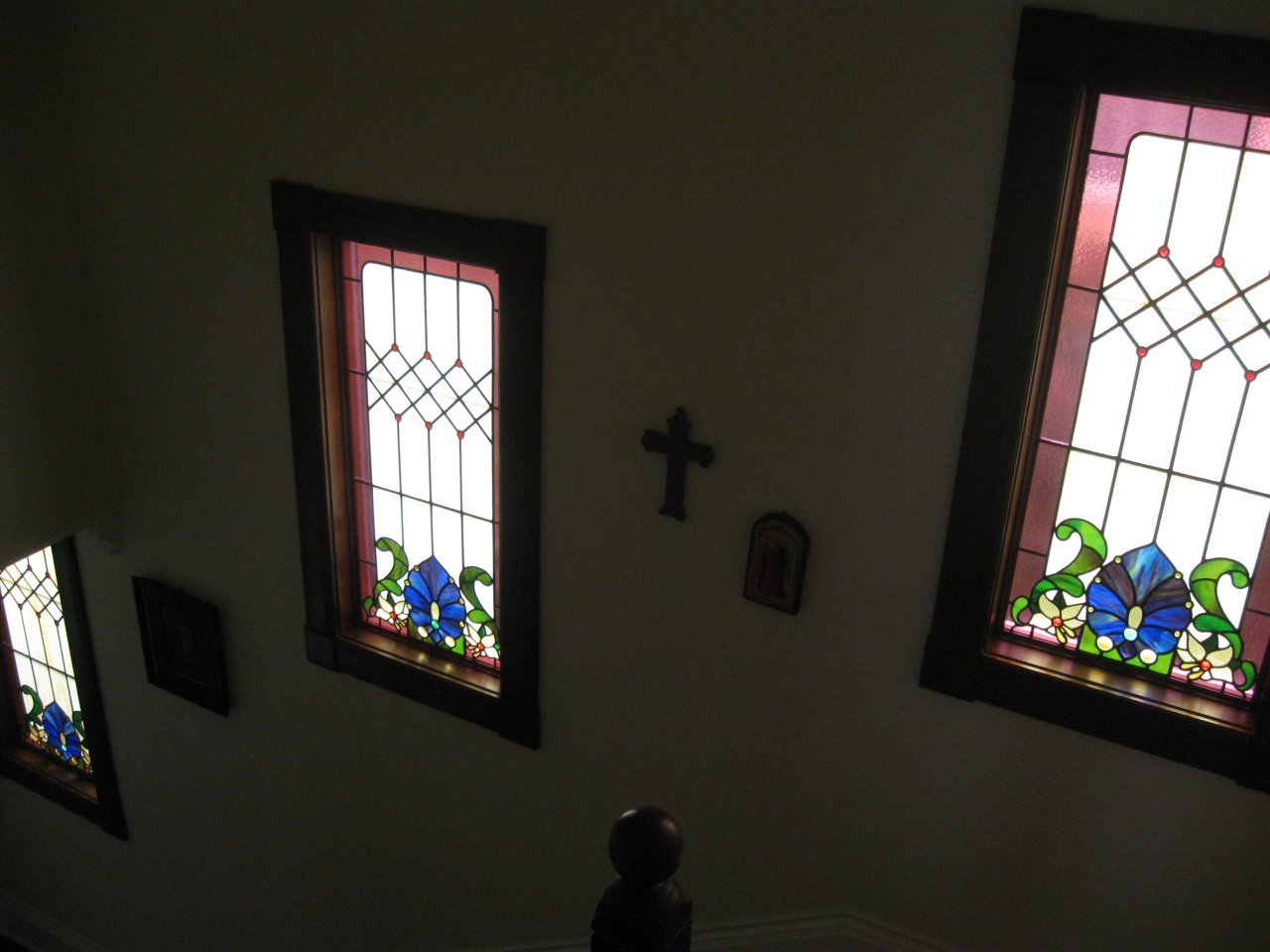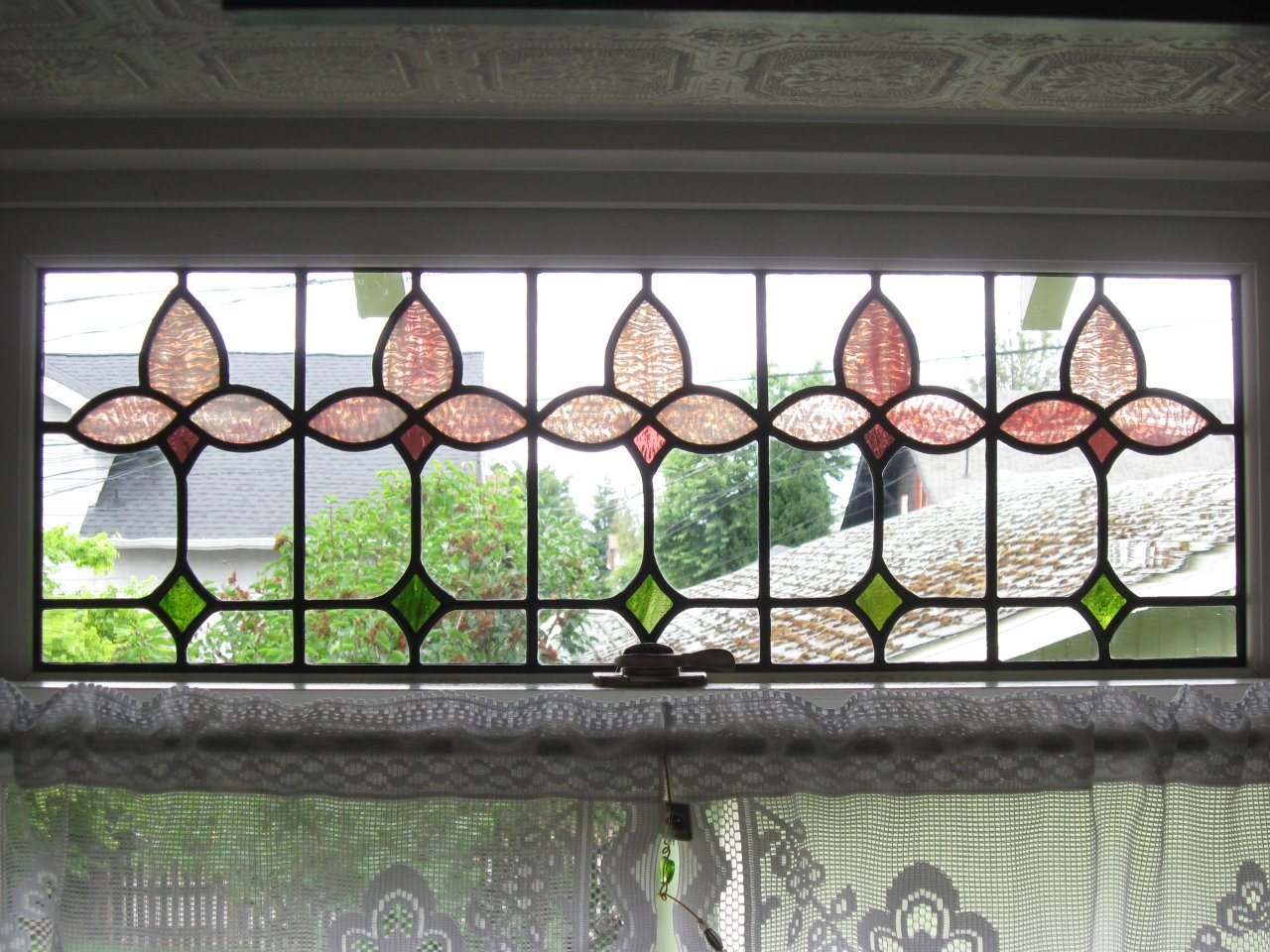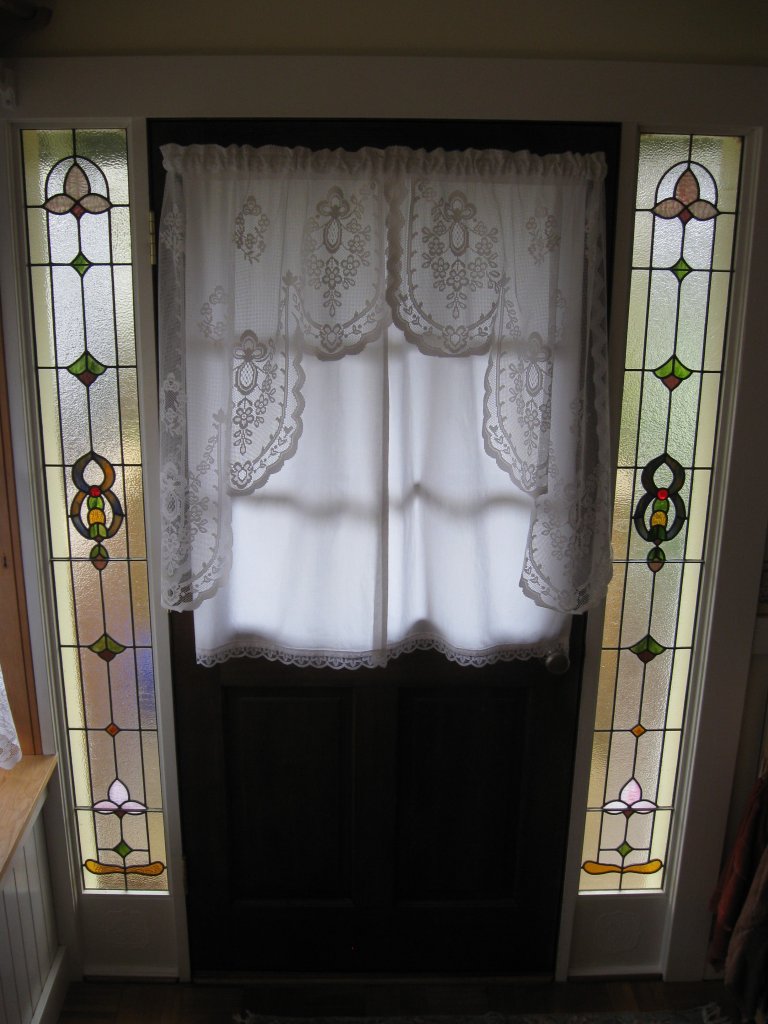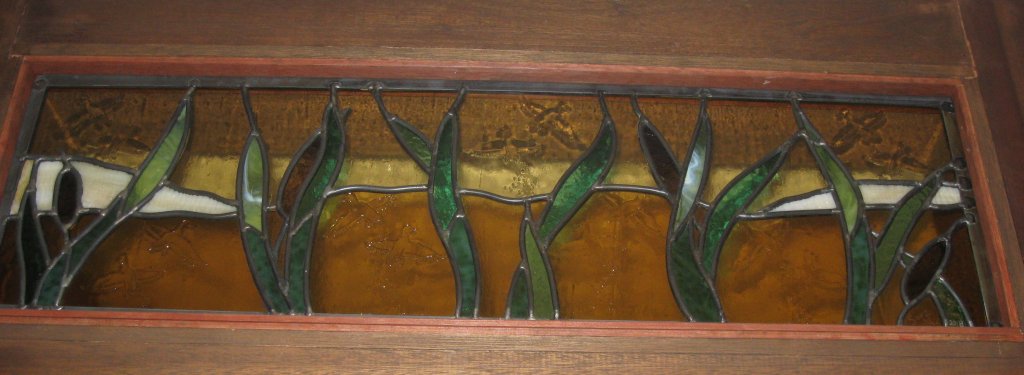Sooz began making stained glass in the year 2000, when she moved to a home built in 1900. The house is of Craftsman construction, but it contains many Victorian interior features. She wanted to install leaded glass windows where they were likely present when the house was constructed. Since she began, Sooz has filled nearly every available location in her house with stained glass panels. Her designs and choice of glass are frequently guided by late 19th- and early 20th-century artisans.
| Three "Stairway" panels (22" x 46") were the first that Sooz constructed for mounting in existing window locations. Many Victorian-era houses have a set of matching or complementary windows that light the staircase or a landing. From the time she first saw this house, Sooz knew these windows had once been glazed with something more interesting than clear glass. And besides, there was no need to see through them into the neighbor's yard. | |
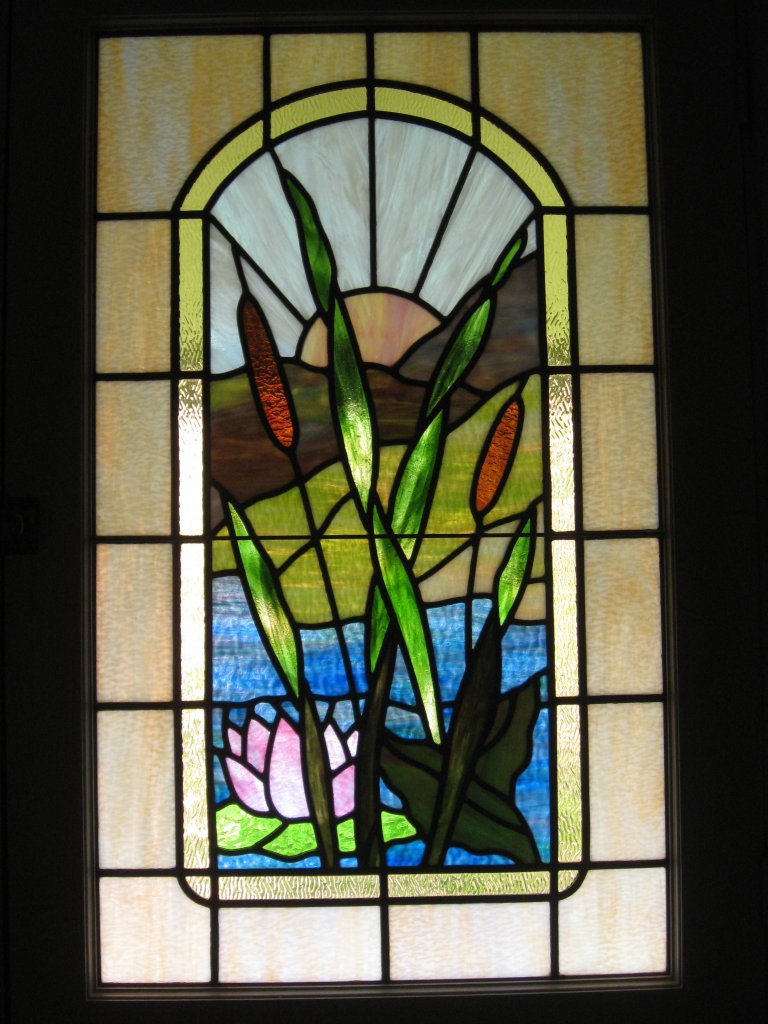 |
The "Cat Tails" panel (18" x 31") was constructed for the downstairs bathroom. Situated on the east side of the house, it benefits from lovely morning illumination. |
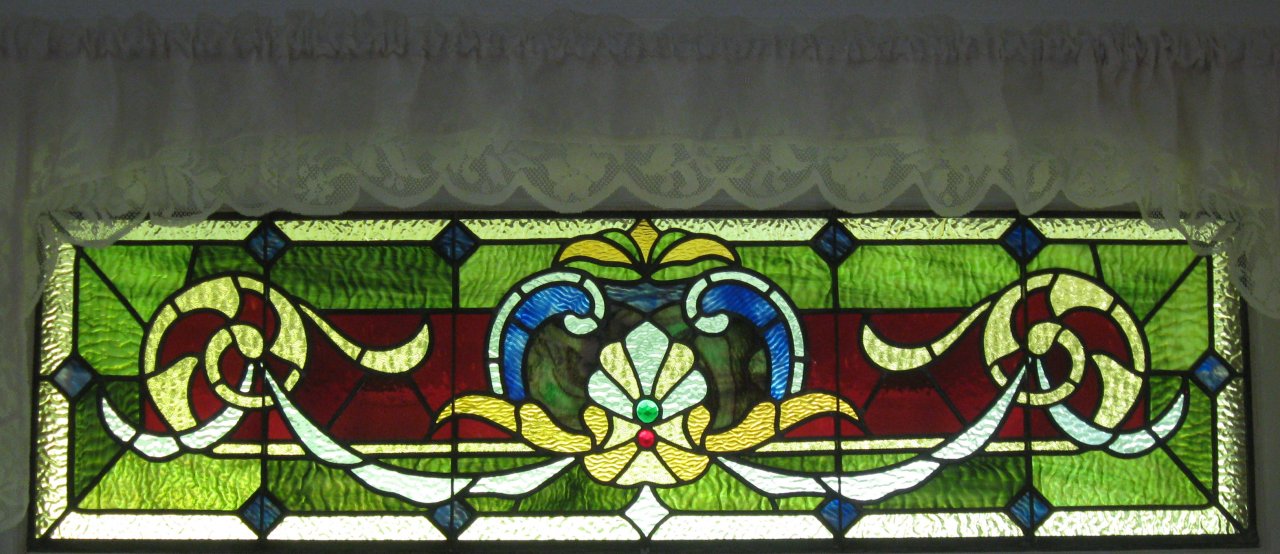 |
The "Over the Bay" panel (55" x 15") tops a large, center, living room window. This pattern was copied from an antique window Sooz saw at Mandarin Stained Glass, her favorite supply shop. She developed her working pattern from a photo of half of the old window, then chose her own colors. There are very similar windows in a couple of other homes in the area, so this design must once have been popular. |
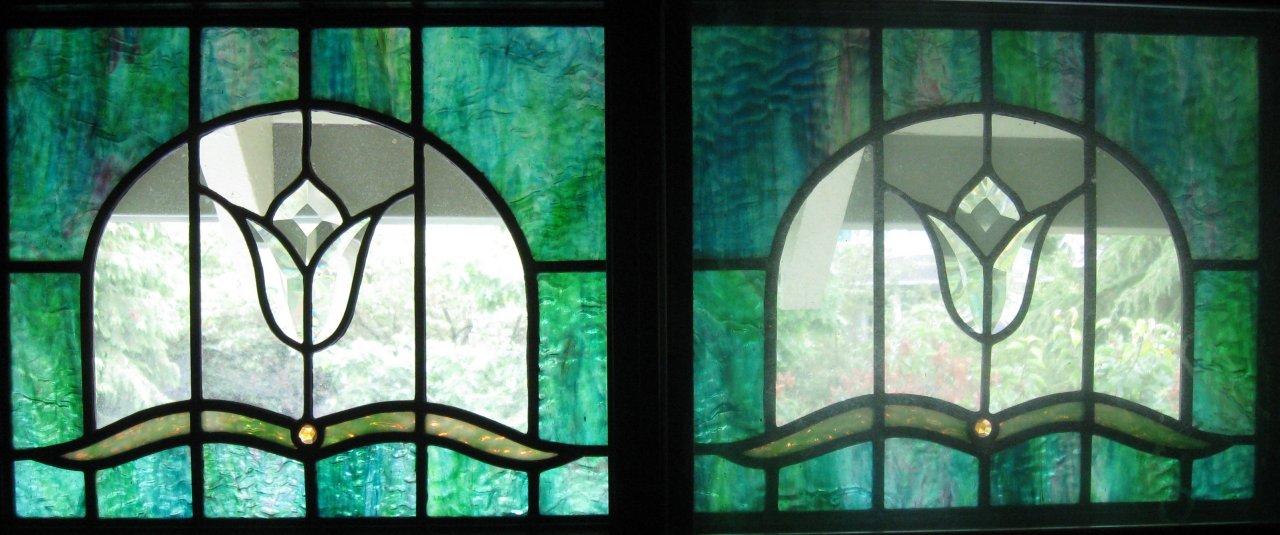 |
The "Bevels" window is two identical panels (each 14" x 13") mounted in a frame that is attached like a storm window to the outside of a sliding anodized aluminum closet window. It hides the unattractive slider from the outside, but it is hinged on the top and can be propped open to allow air circulation. Sooz made use of bevelled glass for the central, flower figure. |
| The "Flower Sash" (29" x 9") and two "Flower Sidelights" (8" x 70") panels were constructed for wooden kitchen window and door units that were installed to replace anodized aluminum sliders. | |
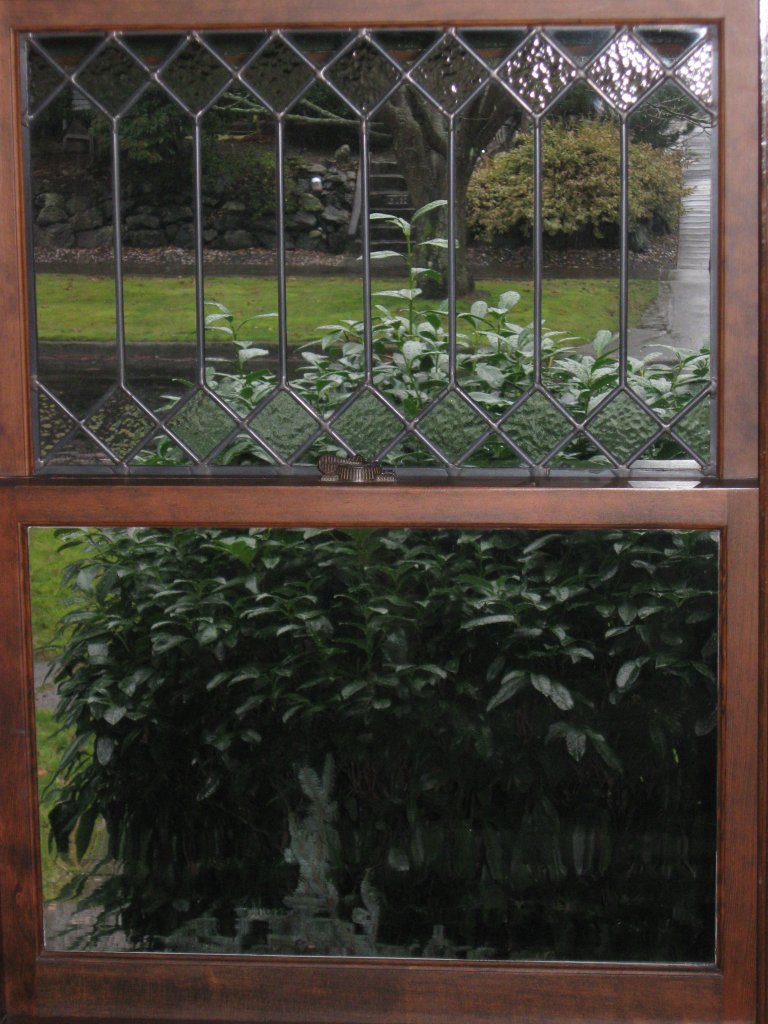 |
The front "Porch Sash" panel (23" x 15") is a simple pattern of clear diamonds that is found in many older houses in this area. Sooz chose to make the small, square diamonds out of a translucent rather than clear glass, to add a little interest. This wooden porch window was installed to replace an aluminum, single-hung. The lower sash is a piece of antique, clear glass. |
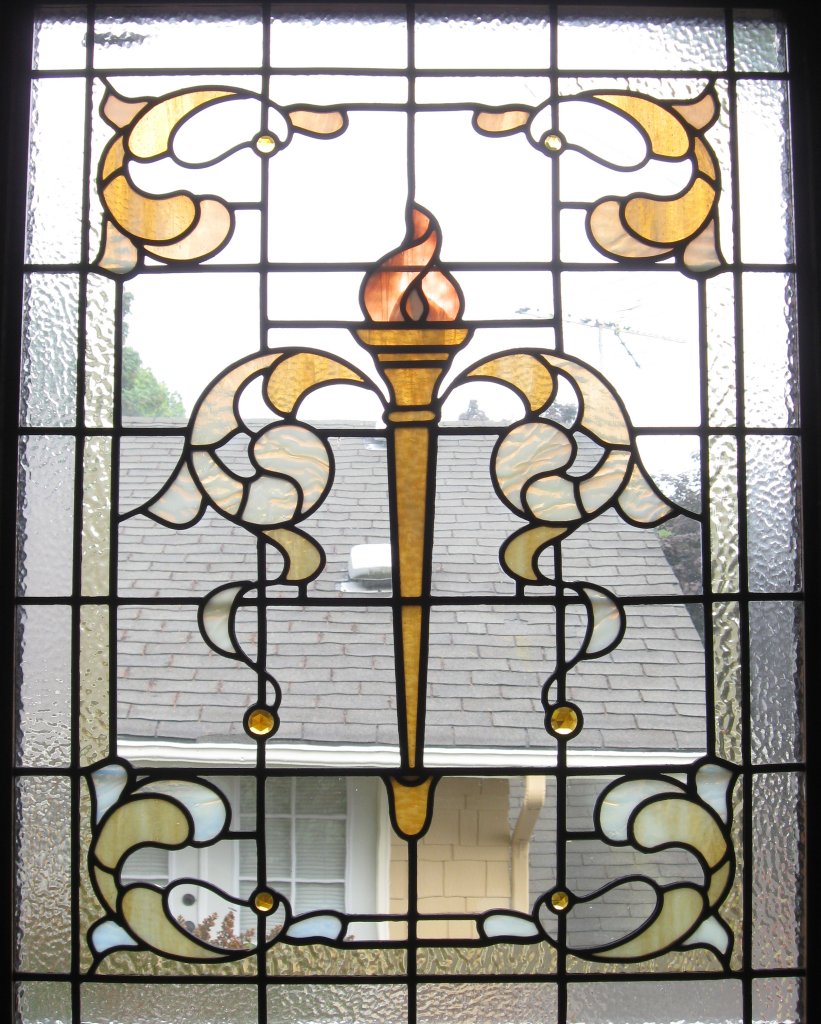 |
The "Torch" panel (26" x 34") contains a lot of clear glass so that it preserves, from some vantage points, an upstairs view of the street and neighborhood (and the house next door...). |
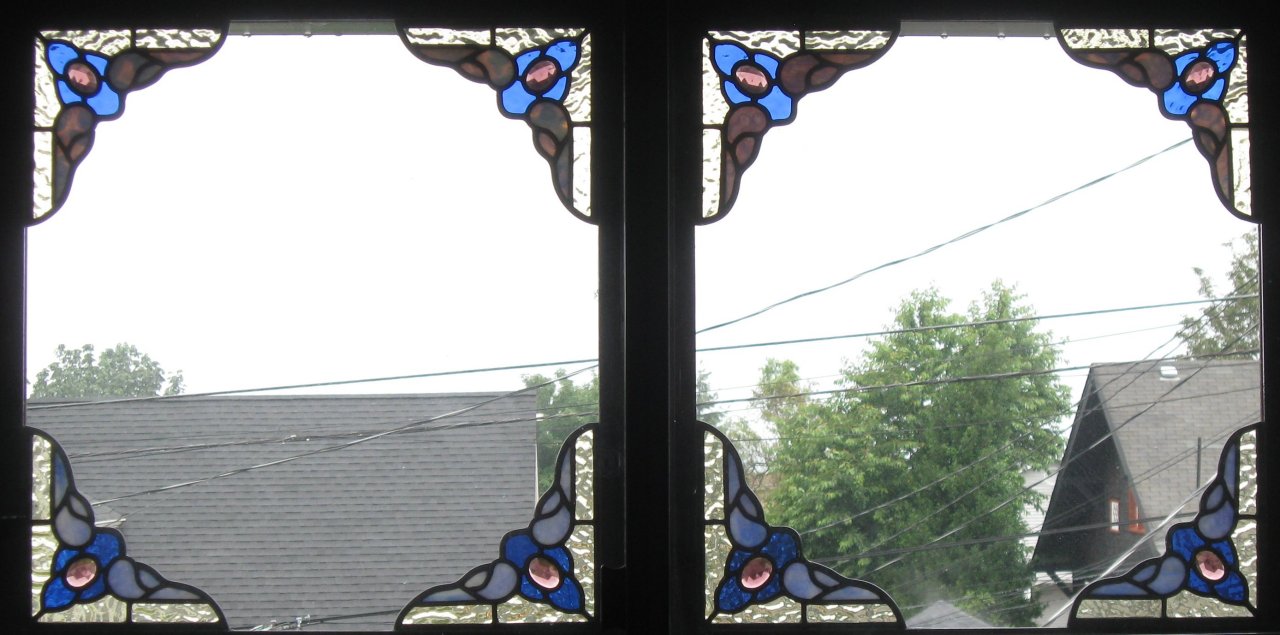 |
The "Array of Corners" is actually 8 pieces (each 6" x 6") mounted in a frame and with open space between. Like the "Bevels" panel, this one is mounted outside an existing anodized aluminum sliding window, as a storm or screen would be. It conceals from the outside, and to some extent, through distraction, from the inside, the unattractive slider. |
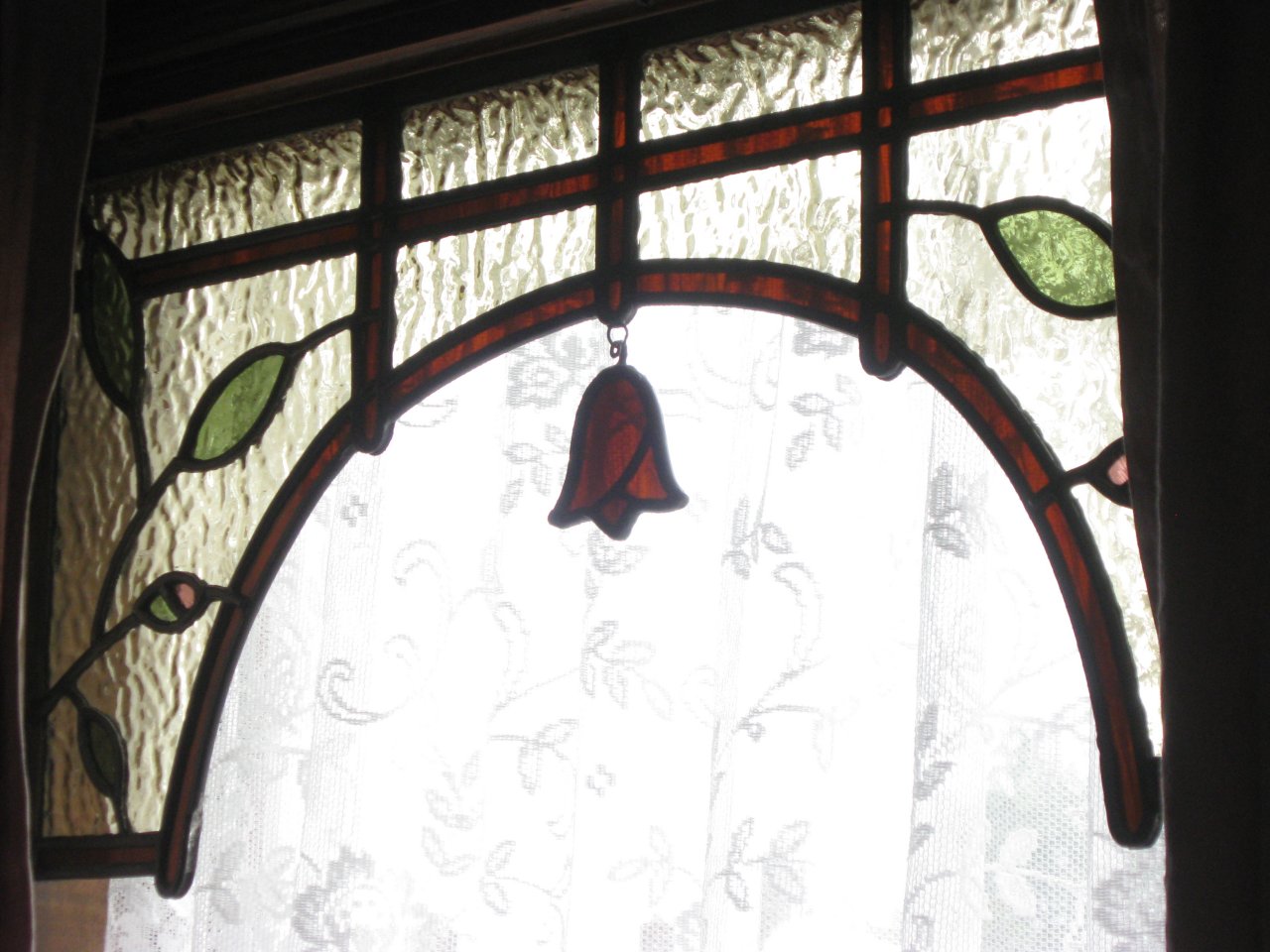 |
Sooz made two "Hanging Bell" panels (26" x 12") that are suspended inside from woodwork framing guest bedroom windows (anodized aluminum, single hung). This was the easiest way to add some stained glass color to those windows. |
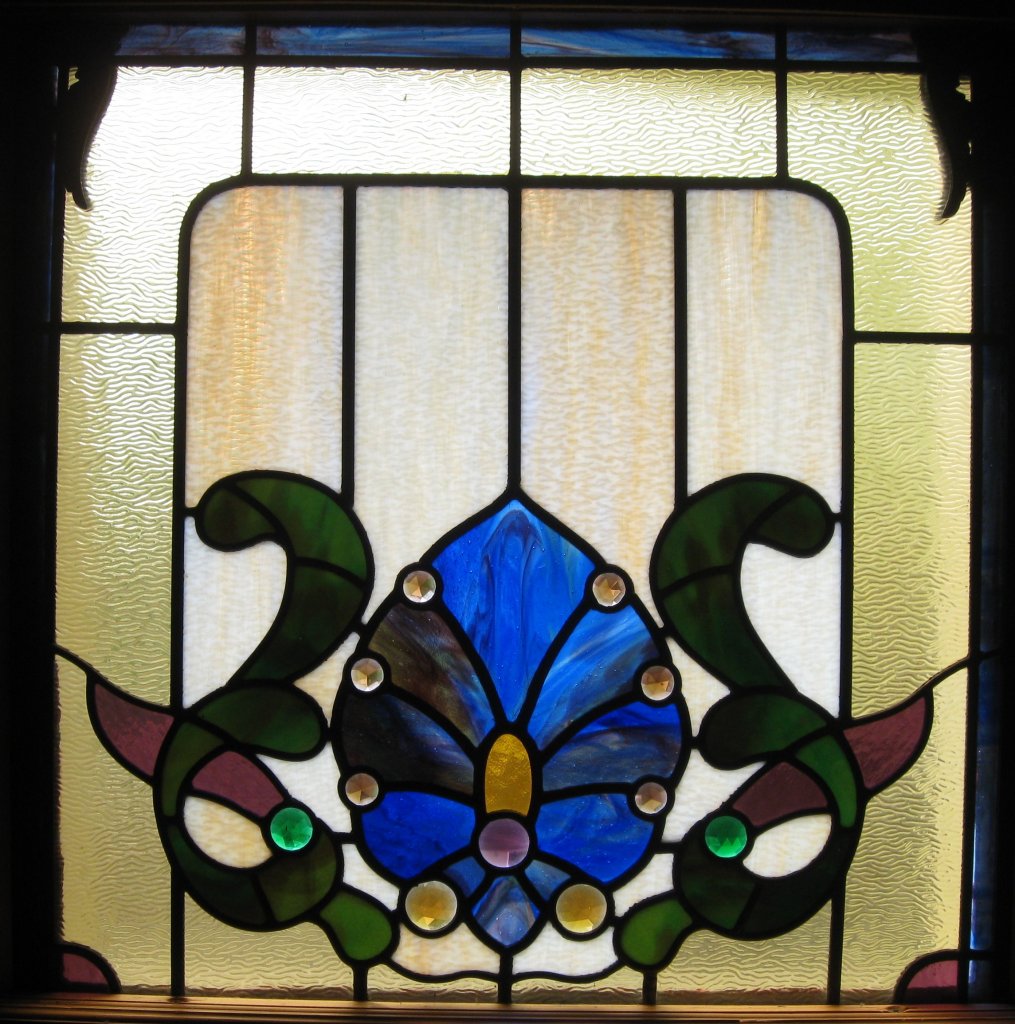 |
The "Fan Prototype" (25" x 26") was constructed from assemblies that Sooz put together in the process of designing the Stairway panels. It found a home in one window of her basement cutting room. |
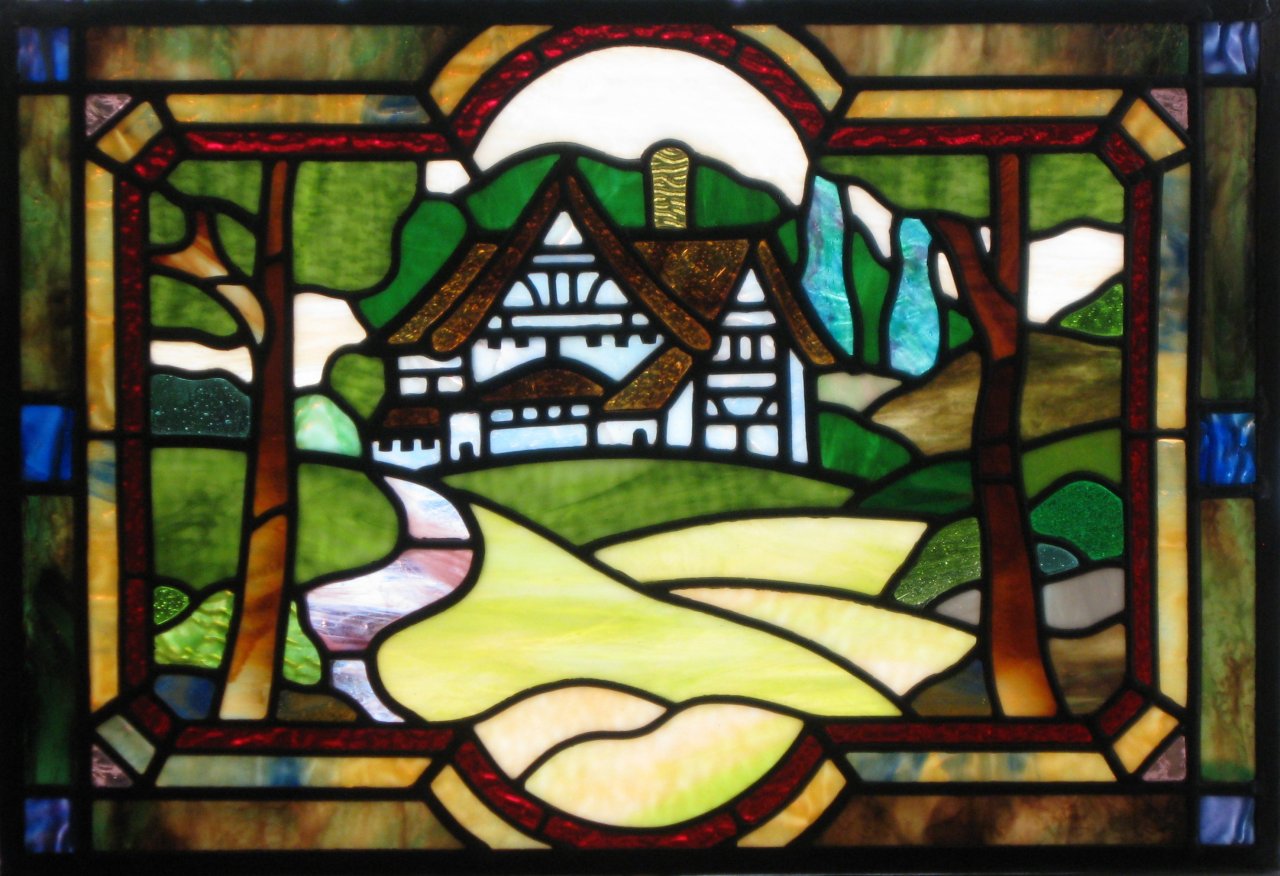 |
The "English Cottage" panel (22" x 16") is installed in an interior location between two rooms. This design is adapted from a book entitled Old Stained Glass for the Home (Douglas Congdon-Martin). It was a challenging project, containing more than 140 individual pieces of glass. |
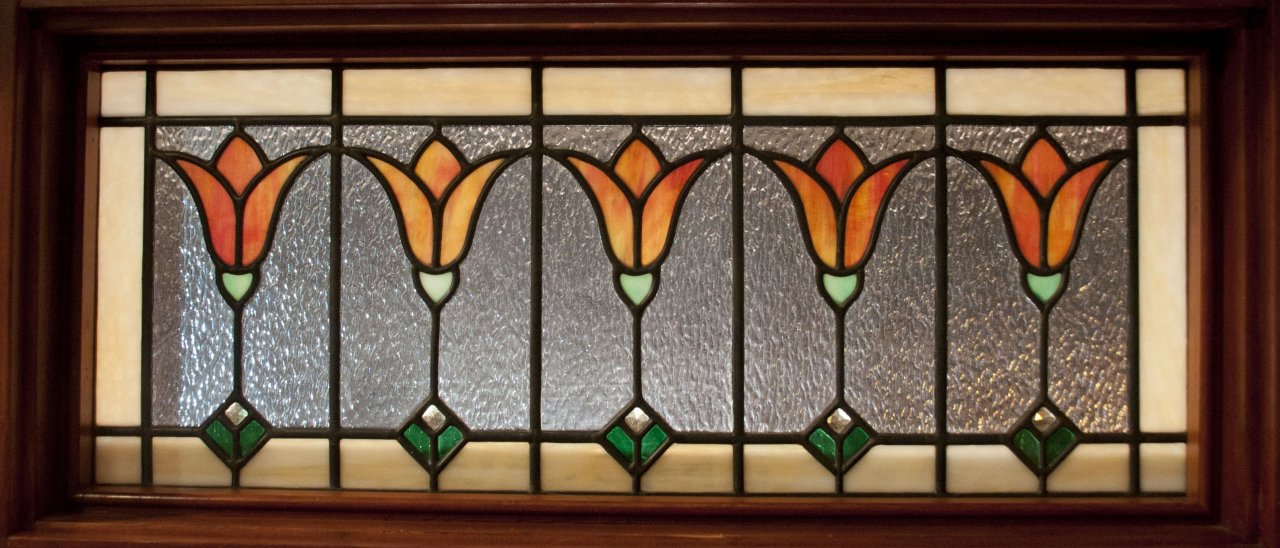 |
Sooz made the "Bungalow" panel (29" x 13") for friends next door when they undertook an interior remodeling project. It is set in woodwork in their living room and back-lit by a stairway. The design echos elements found in the stained-glass doors of built-in cabinets original to their 1929 Bungalow. |
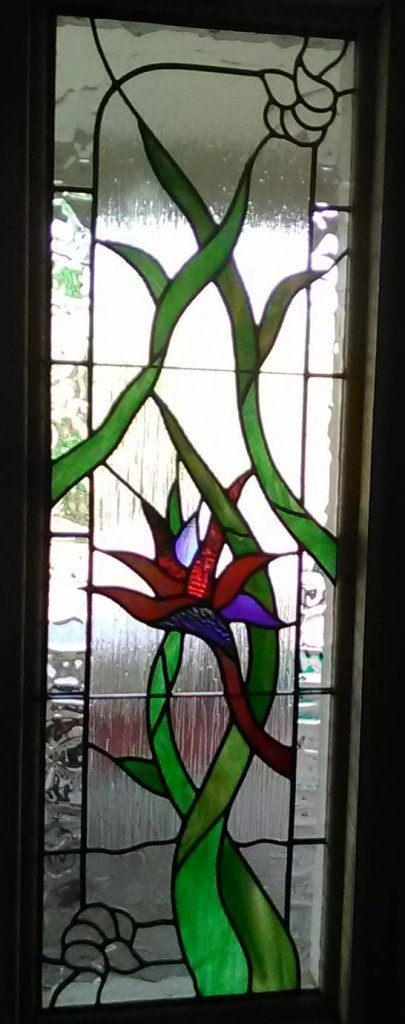 |
The "Bird of Paradise, AJ, AZ" panel (14" x 45") was a gift for Sooz's dear friend who lives near Phoenix. It was inspired by a lovely panel from accomplished stained glass artist Rick Streitfeld, who used beveled glass in his original work. Here, Sooz made good use of a glass that is sometimes called "poor man's bevel". |
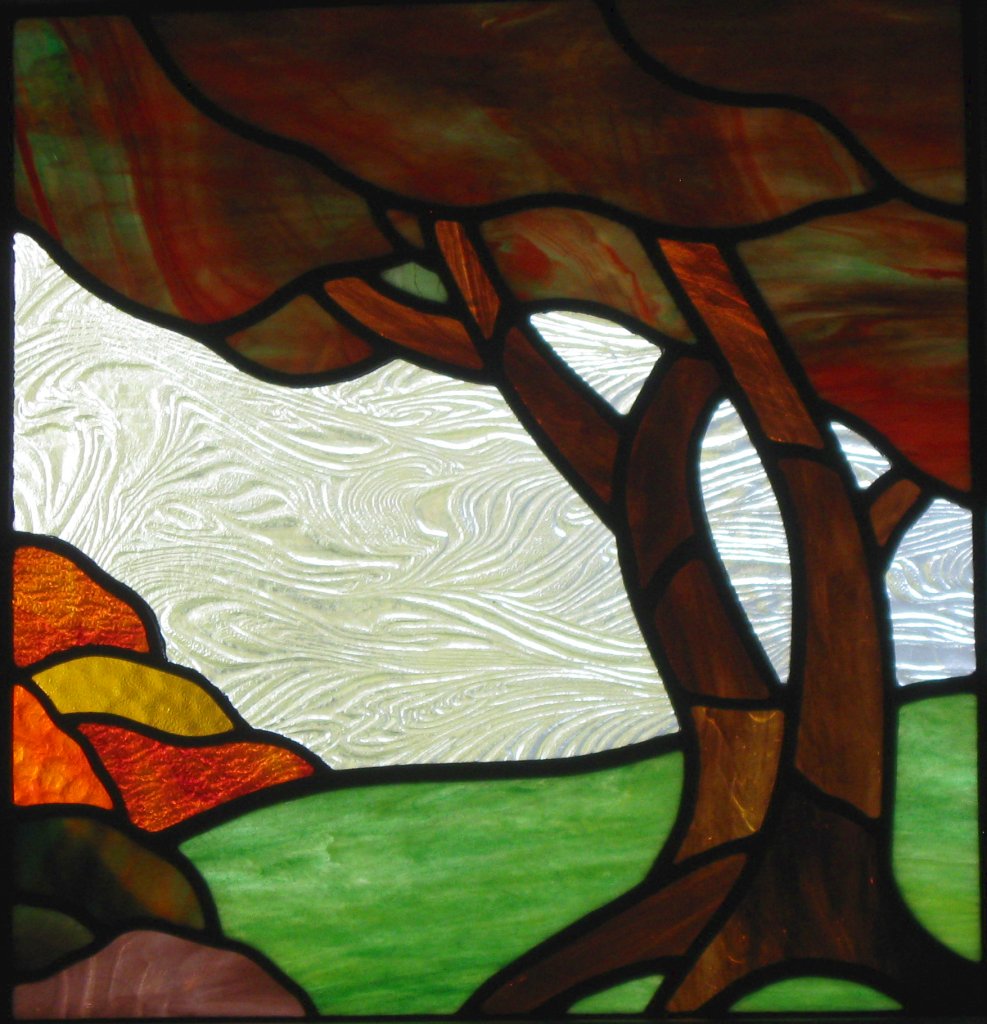 |
This "Fall Scene" is a small panel, the first of four, made for a neighbor. |
 |
The "Muddy Bolton Strid", the second in this series, is a rendering in stained glass of a photo of England's Bolton Strid, a river that narrows to become nearly vertical while carrying a tremendous amount of water. Those that fall in do not find their way back out. |
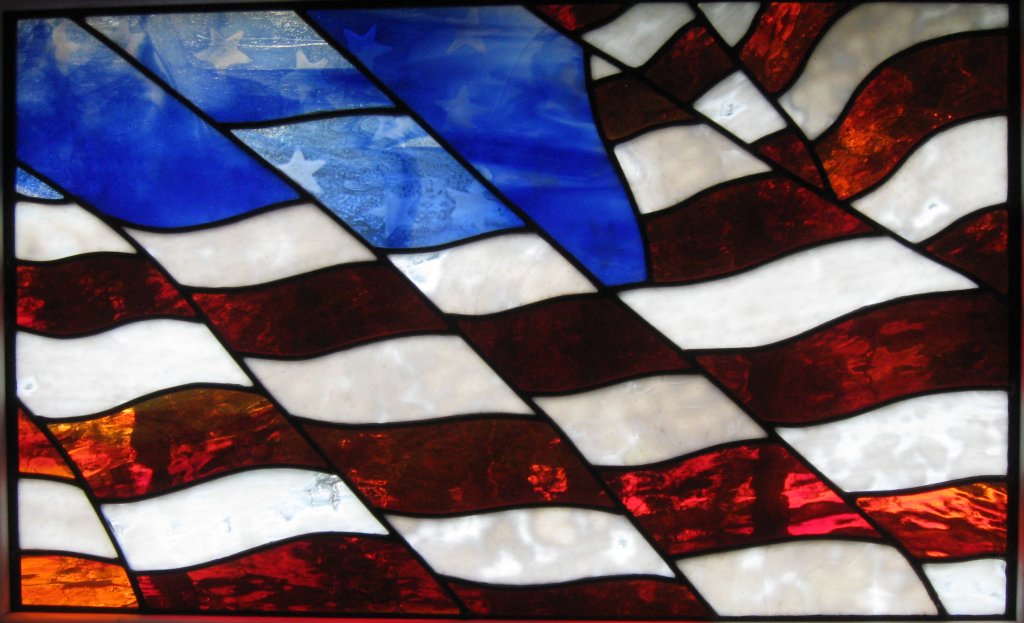 |
This rendering of the "American Flag" is the third in the series. The stars were etched into the blue glass using an acid process. |
| This "Transom" panel is the fourth in a series of panels made for a neighbor. It is mounted over an interior door and shown from both sides. It was designed to take advantage of duck figures embossed into the yellow glass. | |
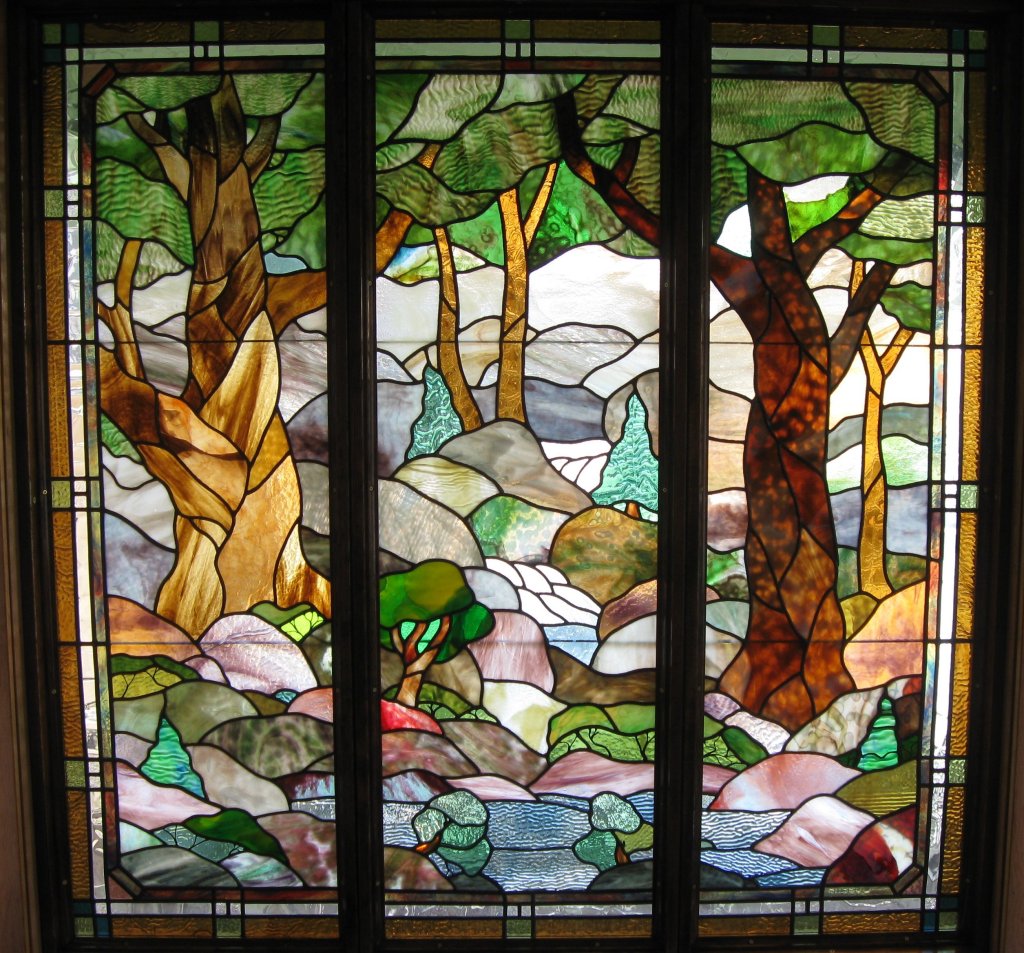 |
The "Landscape" is a large work consisting of three panels (each 17.5" X 56") in separate frames, occupying a space nearly 5 feet square. It is inspired by the paintings of Maxfield Parrish. |
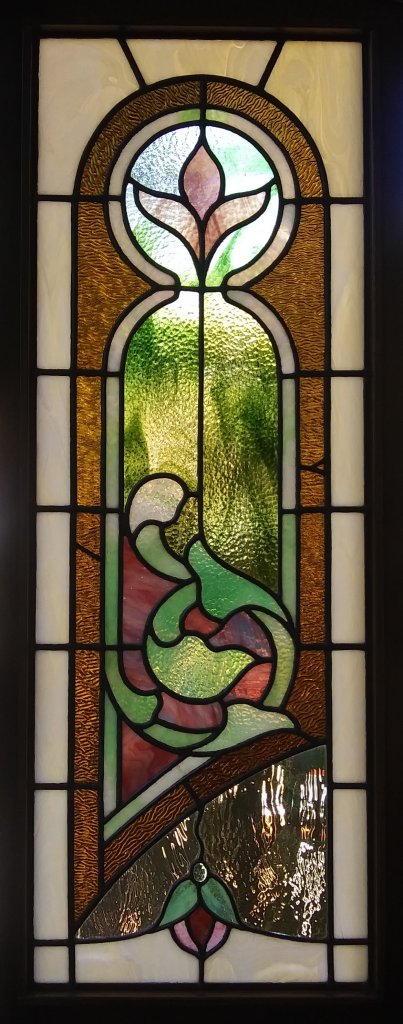 |
"Victorian Repair" is an antique panel that Sooz repaired and modified. The original panel consists of the elements surrounded by and including the curved, amber border. The owner thinks it may have been one of a pair, mirror-matched and used in the interior doors of a church. Sooz replaced some broken pieces in the original and added the elements outside the amber border to make a rectangular panel that could be framed for hanging. The triangular area under the graceful, bottom curve is textured, clear glass, revealing whatever lies behind it (here, a wooden fence). |

